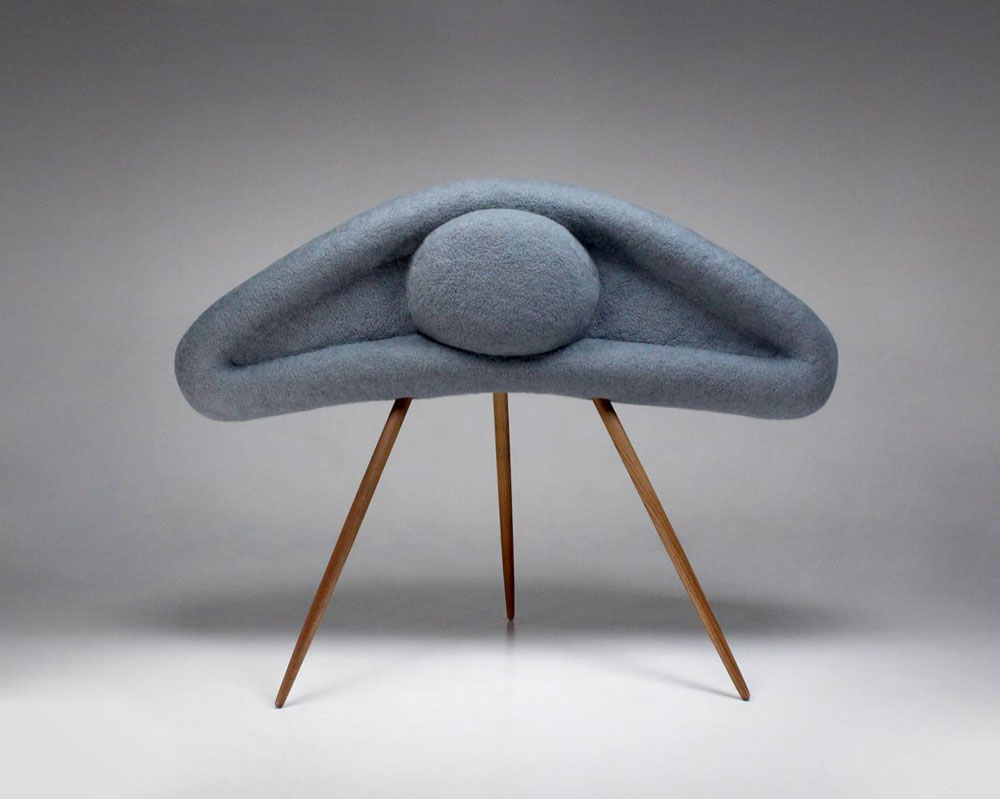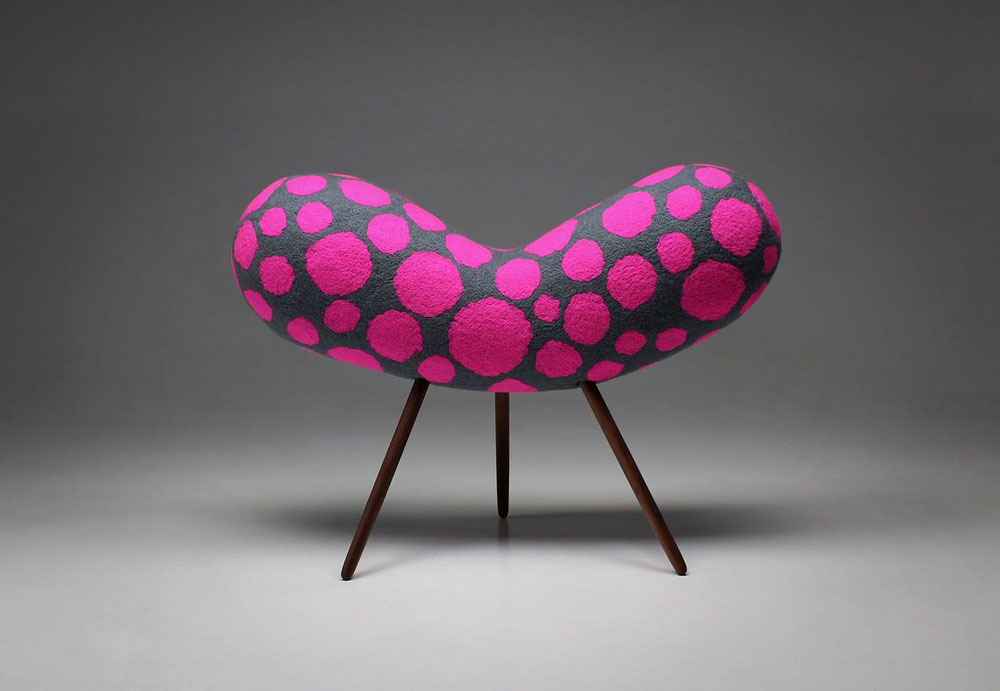ART-PRESENTATION: Masako Miki-MATRIX 273
 Born in Japan, Masako Miki has made Berkeley her home for more than twenty years. Her work often explores her personal relationship to traditional Japanese practices, such as her own experience communicating with the deceased in Obon ceremonies, in which the dead return each year to visit their living relatives.
Born in Japan, Masako Miki has made Berkeley her home for more than twenty years. Her work often explores her personal relationship to traditional Japanese practices, such as her own experience communicating with the deceased in Obon ceremonies, in which the dead return each year to visit their living relatives.
By Dimitris Lempesis
Photo: BAMPFA Archive
For “MATRIX 273”, her solo exhibition at University of California, Berkeley Art Museum and Pacific Film Archive (BAMPFA), Masako Miki has created more than a dozen large-scale, felt-covered sculptures that appear as dreamlike shapes, subtly invoking figurative objects such as lips, umbrellas, and insects. The works draw on the artist’s interest in Shinto, Buddhist, and traditional Japanese culture, such as the belief in shape-shifting spirits (yōkai), which Miki references in the titles of works like “Kinoko” (Mushroom Ghost) and “Nyoijizai” (Animated Back-Scratcher). Brightly colored and gently playful, the sculptures are displayed at BAMPFA in an immersive installation that also includes abstract images on the floor and walls of the gallery. The interplay of shapes creates a sense of fluidity between two and three dimensions, alluding to the intersection of corporeal and spiritual worlds that is a recurrent theme of Japanese folklore and of Miki’s own practice. Her current work, she says, is “inspired by the idea of animism from the Shinto belief of yaoyorozu no kami [eight million gods] who are both good and evil with a wide range of personalities”. In defining this world of shifting boundaries, Miki creates larger-than-life-size, felt-covered forms drawn from the Japanese folk belief in yokai (shape-shifters) who can disguise themselves in any number of different forms. As the artist says: “I want to create a context where the familiar and unfamiliar lose their distinctions and the boundaries of dichotomies become blurred. By reinventing narratives from my cultural traditions, I want to suggest alternative interpretations where new synthesis becomes possible”. Miki creates the semi-abstract, sculptural forms utilizing brilliant colors and sets them into a magical environment suggesting another reality. The installation moves from the three-dimensional forms to abstract images on the floor and walls, conveying a sense of expanding boundaries. Walking around and among the large forms in the gallery, visitors feel the sense of changing perception between the forms and images as they morph and shift between two and three dimensions. The installation reflects Miki’s interest in and connection to Shinto traditions of the interrelatedness of all beings, animate and inanimate, in the universe.
Info: University of California, Berkeley Art Museum and Pacific Film Archive (BAMPFA), 2155 Center Street, Berkeley, Duration: 9/1-28/4/19, Days & Hours: Wed-Thu & Sun 11:00-19:00, Fr-i-Sat 11:00-21:00, https://bampfa.org




